Auto Generate Book Blurb AI Guide
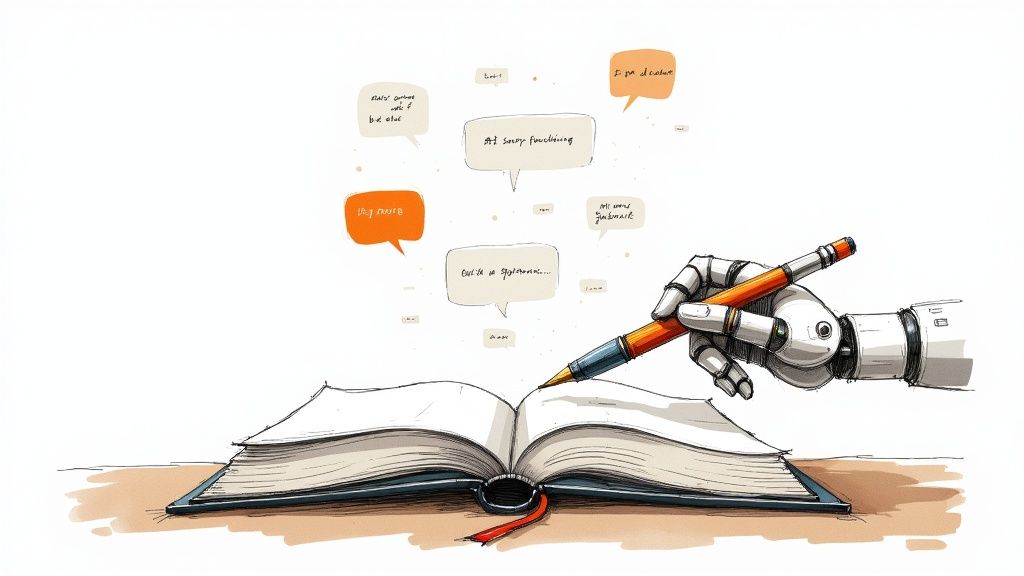
✍️ Part of Our AI Marketing Series: This article focuses on blurb generation techniques. For the complete marketing workflow that shows how compelling blurbs fit into your entire pre-launch preparation and launch strategy, see our comprehensive Complete Guide to AI Book Marketing.
If you're looking for the fastest way to get compelling marketing copy for your book, using an auto generate book blurb AI is a game-changer. These tools can analyze your entire manuscript and spit out multiple blurb options in just minutes. This saves authors an incredible amount of time and gives them a fantastic starting point for promoting their work.
How AI Is Changing Book Marketing
Remember staring at a blank page, trying to shrink your 80,000-word masterpiece into a snappy, 150-word blurb? For so many of us, writing the blurb is harder than writing the actual book. Thankfully, those days are fading. AI-powered tools have become a writer's best friend, acting less like a simple text generator and more like a strategic marketing partner.
An auto-generate book blurb AI doesn't just pull words out of thin air. It genuinely analyzes your manuscript—digging into the plot, themes, character arcs, and overall tone. Armed with that knowledge, it crafts marketing copy that hits all the right notes for your genre and meets reader expectations. It’s not about replacing your creativity, but about amplifying it. The AI provides a solid foundation, and you add the final polish with your unique voice.
The Practical Benefits For Today's Authors
The most obvious win here is the sheer amount of time you get back. Instead of fighting with copy for hours—or even days—you can have several high-quality drafts ready in minutes. That reclaimed time is gold. You can put it toward writing your next novel or handling the million other things that come with being an author. This is fundamentally changing how authors approach their marketing.
The role of AI in an author's workflow has grown significantly. Some platforms let you upload your entire manuscript and get back not just blurb options, but even cover concepts and one-page plot summaries. These AI-generated assets capture the heart of your story, from major plot points to the overall feel, and can even help you pinpoint the right audience for more effective marketing. You can explore how AI-driven tactics to boost book marketing to see just how deep this integration goes.
Think of it as having a junior marketing assistant who has read your book cover-to-cover and is ready to brainstorm ideas 24/7. The AI handles the initial summary and hook creation, while you provide the final creative polish.
This kind of partnership ensures the blurb is both effective and authentic to you. As you start playing with these tools, you’ll discover they can do more than just write blurbs. They're also great for whipping up ad copy or social media posts.
Before we get into the "how-to," let's quickly summarize what these tools bring to the table.
New to AI blurb writing? This practical guide assumes some familiarity with AI tools. If you're just getting started, check out our best AI tool for book blurbs guide first to understand which platforms deliver the best results, then come back here for hands-on implementation.
AI Book Blurb Generator Capabilities Overview
| Feature | Benefit for the Author |
|---|---|
| Manuscript Analysis | Reads your entire book to understand plot, characters, and tone. |
| Genre-Specific Tone | Generates copy that aligns with the conventions of your specific genre. |
| Multiple Draft Generation | Provides several distinct blurb options to choose from and refine. |
| Hook & Tagline Creation | Extracts catchy one-liners to grab a reader's attention immediately. |
| Keyword Identification | Suggests relevant keywords for better discoverability on retail sites. |
| Time Savings | Reduces the blurb-writing process from hours or days to mere minutes. |
As you can see, the benefits go far beyond just getting a few paragraphs of text. These tools are designed to be a comprehensive part of your marketing toolkit.
To get a better sense of the bigger picture and how this technology is reshaping content development across industries, it's worth exploring a guide on automated content creation. Understanding the principles behind it will help you get the most out of these tools for all your author marketing needs.
Choosing the Right AI Book Blurb Tool
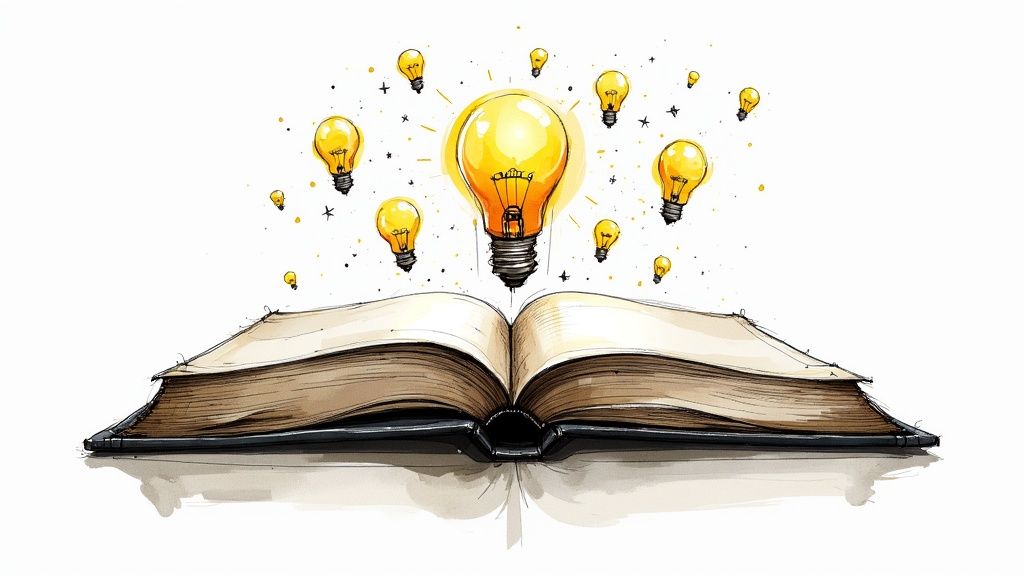
Let's be honest: not every tool that promises to auto generate a book blurb with AI is going to hit the mark. The market is flooded with options, from all-in-one author platforms to simple, single-task generators. Picking the right one really comes down to what you need. A sci-fi author trying to hint at a complex, alien political system has different needs than a romance novelist who wants to nail the "enemies-to-lovers" tension.
The trick is to ignore the flashy promises and dig into the features that will actually help you sell your story. Making a smart choice right now saves a ton of headaches later and gives you a much better starting point.
What to Look For in an AI Blurb Generator
When you’re weighing your options, there are a few non-negotiables. A great AI needs to grasp the nuances of genre, let you steer the tone, and, most importantly, act like a brainstorming partner.
- Genre Awareness: Does the tool get your genre? A cozy mystery blurb needs to feel charming and intriguing, while a gritty military sci-fi blurb needs to be punchy and intense. The AI has to understand those conventions.
- Tone and Voice Control: You’ve spent months perfecting your authorial voice. The AI shouldn't erase it. Look for tools that let you specify a tone—like "witty," "dark," "suspenseful," or "heartwarming"—to get a result that feels more like you.
- Creative Variety: A good tool won't just spit out one "perfect" blurb. It should offer several different takes, giving you options to mix, match, and build upon. Think of it as a creative collaborator, not a vending machine.
Getting this right is more important than ever. Authors are jumping on board with this tech. A 2025 survey revealed that 45% of authors are using generative AI for writing and marketing. Genres like Romance (59%) and Sci-Fi/Fantasy (56%) are leading the charge, which tells you that having a tool that understands specific reader expectations is crucial. You can see the full breakdown of how authors are thinking about AI in the survey results.
Standalone Generators vs. Comprehensive Suites
You'll generally find two types of services out there. First, you have the standalone blurb generators. They do one thing, and they often do it fast. They're usually simple, requiring just a bit of input to get a draft. Perfect if you're in a hurry or just need some quick ideas.
Then you have the comprehensive writing suites. A platform like ManuscriptReport.com is a great example. It doesn't just write a blurb; it can analyze your entire manuscript to help with keywords, ad copy, and even find comparable titles for positioning. This route gives you a more strategic, data-backed foundation for your entire book launch.
Pro-Tip: Before you pay for anything, run a chapter of your book through the free trial. The quality of what it spits back will tell you everything you need to know about how well it understands your story and style.
At the end of the day, the best tool is the one that fits into your process without causing friction. And remember, even the smartest AI is just giving you a rough draft. That final, polished blurb needs your human insight to truly connect with readers. If you want to sharpen those instincts, our guide on how to write a book blurb that sells is the perfect place to start. Knowing the fundamentals will make you a much better director for your AI assistant.
Getting the AI to Write Blurbs That Actually Sell
The secret to a great AI-generated book blurb isn't the tool you use—it's the prompt you give it. Think of it this way: you’re the director, and the AI is a brilliant but very literal-minded actor. If you give vague instructions, you'll get a flat, generic performance. But a detailed, thoughtful prompt? That’s how you get a blurb that feels like it was written just for your book, packed with emotion and intrigue.
Honestly, learning how to write a good prompt is the most critical skill you can develop for using any auto generate book blurb AI. It’s where your human creativity meets the AI's processing power.
This visual breaks down how your raw story ideas become polished marketing copy through a solid prompt.
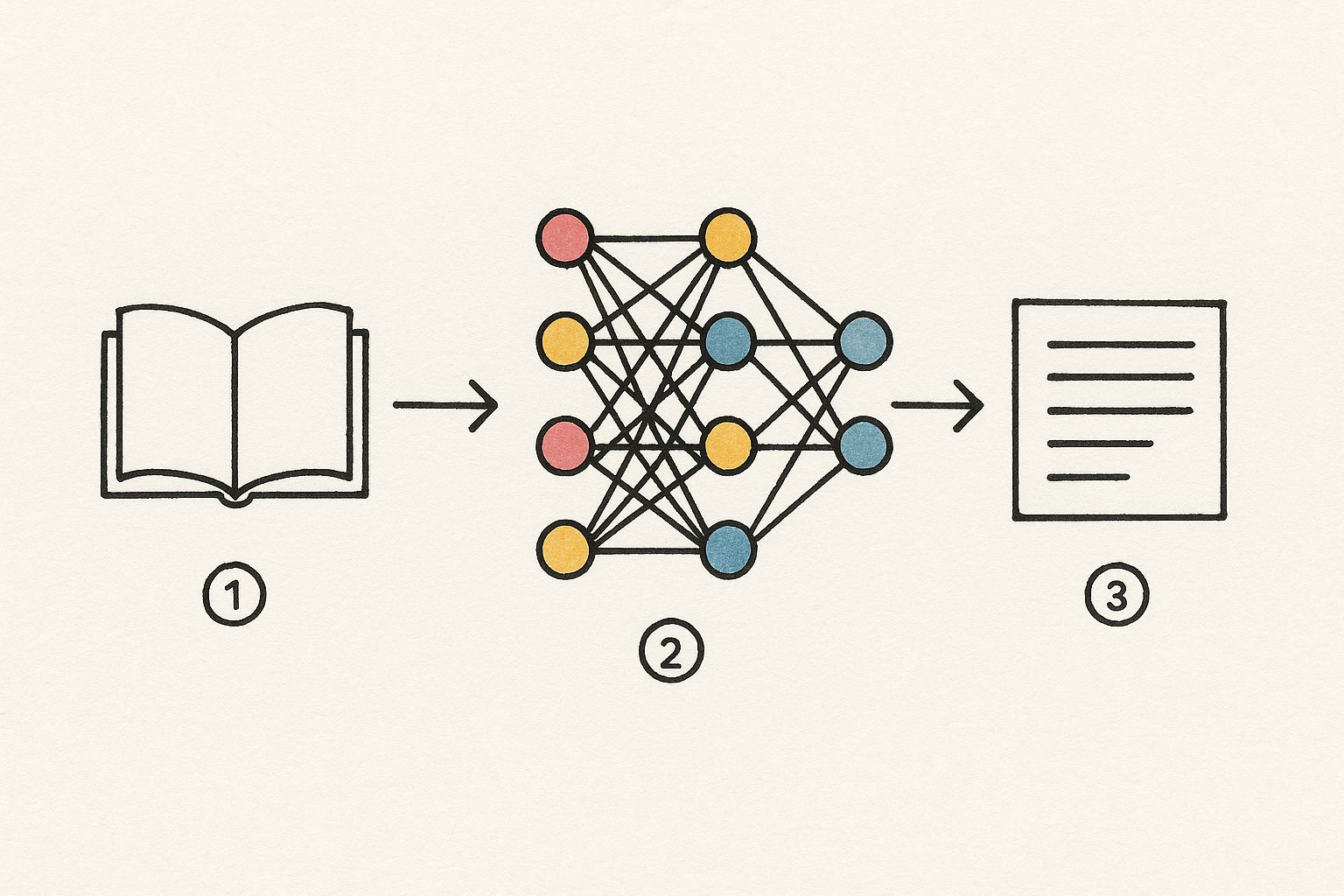
As you can see, what you put in directly dictates the quality of what you get out. It’s about turning your story’s essence into a blurb that hooks readers.
The Building Blocks of a Powerful Prompt
So, what makes a prompt work? It's all about giving the AI the right ingredients. Understanding what makes an effective blurb helps you craft better prompts. You want to hand over the core building blocks of your story without getting lost in the weeds.
Every strong prompt should include these key elements:
- The Hook: What's the most interesting thing about your story? Lead with it. Maybe it’s a mind-bending "what if" scenario or the shocking event that kicks everything off.
- The Main Character & Goal: Who is your protagonist, and what do they want more than anything? This is the engine driving your plot.
- The Conflict & Stakes: What's standing in your hero's way? And more importantly, what’s the cost of failure? The stakes are everything—they create the tension.
- Key Plot Points (Spoiler-Free!): Give the AI 2-3 major events that shape the journey. You’re hinting at the big moments, not spoiling the finale.
- Tone & Genre: Be explicit. Don't just say "fantasy." Say "dark and gritty YA Dystopian" or "witty and romantic Cozy Mystery."
By including these details, you're not just making a request; you're writing a creative brief. This is the difference between a blurb that falls flat and one that sings.
For example: A weak prompt like, "Write a blurb for my fantasy book about a thief," will get you a paragraph full of tired clichés. A much better prompt would specify the thief's tragic past, the cursed artifact she’s forced to steal, and the ruthless immortal knight hunting her down. The result? A blurb that’s specific, emotional, and grips the reader from the first sentence.
Advanced Moves for Next-Level Blurbs
Once you've got the basics down, you can start adding extra layers to really dial in the AI's output. This is how you go from a good blurb to a great one that speaks directly to your ideal reader.
Try weaving in these advanced details:
- Target Audience: Tell the AI who you're writing for. "For fans of Sarah J. Maas and Jennifer L. Armentrout."
- Comparative Titles: Give it some reference points. "Think The Hunger Games meets The Handmaid's Tale."
- Keywords: If you’re selling on a site like Amazon, this is huge. Include terms you want the algorithm to see, like "enemies-to-lovers," "chosen one," or "dystopian."
These prompting skills aren't just for blurbs. If you want to get better at writing for AI in general, check out these expert tips on crafting AI prompts for better results. The core idea is always the same: giving the AI clear context and specific instructions saves you hours of editing and gives you a much better final product.
From AI Draft to Polished Blurb
Think of the output from an auto generate book blurb AI tool as a fantastic head start, not a finished product. It's a solid first draft, for sure, but it’s missing the one ingredient that truly sells a book: you. This is your chance to step in and transform a good summary into an irresistible hook.
The main goal here is to infuse the text with your unique authorial voice. An AI understands plot points and themes, but it can’t quite capture your personal style—that specific blend of wit, grit, or lyricism that defines your writing. A great way to check this is to read the draft out loud. Does it sound like something you would write? If it feels a bit off, it's time to start refining.
Sharpening the Language and Honing the Hook
Your first editing pass should be all about the words themselves. AI tools sometimes play it safe, opting for functional but generic language. Your job is to elevate it. Look closely at every word. Could a simple verb like "walked" be swapped for "stumbled," "raced," or "crept" to instantly add more flavor and context?
Once the language is sharper, turn your attention to the rhythm and flow. A great blurb has a cadence that effortlessly pulls the reader from one sentence to the next.
- Vary Your Sentence Length: Mix short, punchy statements with longer, more descriptive sentences. This creates a much more dynamic and engaging reading experience.
- Strengthen Your Verbs: Hunt down passive verbs and replace them with active ones. Instead of "The city was destroyed by aliens," try "Aliens decimated the city." It’s punchier and more immediate.
- Root Out Clichés: Is your protagonist "one of a kind"? Is the world "on the brink of collapse"? Because AI learns from vast amounts of text, it can sometimes fall back on these tired phrases. Spot them and find a fresh way to convey the same idea.
This refinement process is where the real magic happens. Learning the principles of effective marketing text optimization can give you a surprising edge, showing you how even small tweaks to wording can make a huge impact.
Weaving in Emotion and Sparking Action
Ultimately, a blurb sells an emotional promise. People pick up books because they want to feel something—a thrill, a pang of love, a shiver of fear, or a burning curiosity. The AI draft gives you the plot; your job is to connect those events to the reader's emotions.
Key Takeaway: Your blurb's most important job is to make a potential reader feel the central conflict. Don't just tell them the stakes are high; use words that make their pulse quicken.
After you’ve amplified the emotional core, you need a powerful closing. This could be a compelling call-to-action or a lingering question that the reader needs to have answered. Think of a direct challenge ("Will she save her kingdom, or be consumed by the power she wields?") or a tantalizing statement that leaves them desperate for more. This is the final hook that often gets missed in a purely AI-generated text.
Don't be afraid to play around. Use AI tools to create a few different versions. Then you can pick and choose the best lines, rewriting and combining them in your own voice. This kind of collaboration—blending AI's speed with your creativity—is how you get a blurb that doesn't just describe your book, but actually sells it. For a comprehensive guide to AI description tools, check out our AI book description generator ultimate guide.
Common Mistakes to Avoid When Writing AI Blurbs

It's easy to see why authors are excited to auto generate a book blurb with AI. It feels like a shortcut to one of the hardest parts of marketing a book. But with this new power comes a few pitfalls I've seen writers fall into time and time again.
The single biggest mistake? Treating the first draft from the AI as the final version. Hitting "generate" and immediately pasting that text onto your Amazon page is a fast track to a bland, forgettable blurb that does your story a disservice.
Think of the AI's output as a lump of clay. It’s a fantastic starting point, maybe even with the right general shape, but it's not the finished sculpture. It's missing your human touch, your unique spark. Without it, you get a blurb that sounds like a machine wrote it—because one did.
Another common slip-up is giving the AI lazy, generic prompts. Typing "write a blurb for my sci-fi novel" is asking for a pile of clichés. The AI doesn't know what makes your story special. You have to feed it the good stuff: your hero’s deep-seated desire, the impossible choice they face, and the world-shattering stakes.
Forgetting Your Voice and Genre
A blurb is more than just a summary; it's a handshake with your reader, delivered in your unique authorial voice. A huge error is letting the AI sand down all your stylistic edges. If you're known for whip-smart, sarcastic heroines, a stuffy, formal blurb will feel like a bait-and-switch to your fans.
This is critical when it comes to genre, too. A cozy mystery blurb should feel like a warm hug with a hint of danger. A gritty thriller needs to be tense and punchy. If you don't steer the AI on these tonal nuances, you'll get a blurb that feels completely out of place and fails to attract the right readers.
I see it all the time with authors new to these tools—they just assume the AI understands genre tone. You have to be explicit. Tell it what you want. Use prompts like "write this in a witty, fast-paced voice" or "give it a dark and atmospheric tone" to make sure the output actually matches reader expectations.
Overlooking Factual Inaccuracies
AI tools are impressive, but they are not perfect. And this brings us to the final, and perhaps most dangerous, mistake: not fact-checking the blurb against your actual book. AI can "hallucinate," meaning it can invent details or flat-out get things wrong.
It might twist a character’s motivation, misrepresent a central plot point, or, worst of all, spoil a twist you spent 80,000 words building up to. Even small errors can erode a reader's trust before they even buy the book, setting you up for disappointed reviews.
Before you hit publish, meticulously comb through the blurb and check these details against your manuscript:
- Character Details: Are their names spelled right? Are their core motivations and personality traits accurate?
- Plot Points: Does the blurb set up the main conflict correctly? Crucially, does it avoid giving away too much?
- Setting & Tone: Does the description of the world actually feel like the world you wrote?
This final human review is absolutely non-negotiable. It's what turns the AI-generated text from a liability into a powerful, authentic marketing asset. By sidestepping these common blunders, you can make an AI tool a genuine partner in your creative process.
Answering Your Questions About AI Blurb Generators
Diving into AI tools can feel a little strange, especially for authors. We pour our hearts into our books, so it's only natural to be cautious about handing over any part of the creative process to a machine. Let's walk through some of the big questions and concerns I hear from writers all the time.
"Will an AI Blurb Really Sound Like My Book?"
This is probably the number one worry I encounter. The honest answer? An AI won't nail your unique voice right out of the gate, but it can get you a surprising 80% of the way there.
Think of the AI as a brilliant, but very literal, assistant. It excels at building a solid foundation—hitting the right plot points, using compelling language, and structuring the blurb correctly. Your job is to come in and be the artist. You’ll take that strong draft and infuse it with your personality, tweaking the word choice and rhythm until it feels truly yours.
"Is Using an AI to Write My Blurb Cheating?"
The ethics of AI is a hot-button issue, for sure. But the consensus forming in the publishing world is that AI is a tool, much like any other software we use. It's an assistant, not a replacement for your creativity.
I like to compare it to hiring a professional cover designer. You're the one with the story and the vision. The designer simply uses their specialized tools and expertise to bring that vision to life visually. An AI blurb generator works the same way. You're still the author, the storyteller, and the ultimate creative force behind the work.
Remember, ghostwriting has been an accepted practice in publishing for a very long time. Using an AI to help draft your marketing copy is just a more modern and accessible way to get a little help. It’s all about how you use the tool.
"How Do I Get My AI Blurb Ready for Amazon?"
This is where the rubber meets the road. A great blurb is useless if readers can't find your book. For platforms like Amazon KDP, that means thinking about keywords from the very beginning.
The trick is to build your keywords directly into the prompts you give the AI. Don't wait to shoehorn them in later.
- Genre Tropes: Be specific. Tell the AI to include phrases like "enemies-to-lovers," "found family," or "one bed."
- Subgenre Keywords: Feed it terms that readers search for, like "dystopian sci-fi," "cozy mystery," or "military romance."
- Comp Titles: A classic for a reason. Instruct the AI to create a blurb "for fans of" well-known authors in your genre.
When you give the AI these ingredients, it naturally weaves them into the blurb it creates. This helps Amazon's algorithm understand exactly who your ideal reader is. Of course, you'll still need to do a final pass to make sure the keywords flow naturally and don't sound like you just stuffed them in for SEO. It's that combination of AI efficiency and your strategic human touch that creates a blurb that not only sells the story but also gets discovered.
Master Your AI Blurb Strategy
This hands-on guide is part of our complete AI blurb writing series. Depending on where you are in your journey, these resources will help you master every aspect:
📚 Foundation Knowledge: Start with our comprehensive guide to the best AI tools for book blurbs to understand which platforms deliver proven results and see real case studies from successful authors.
🔬 Technical Deep-Dive: Want to understand the technology behind these tools? Our AI book description generator technical guide explains algorithms, processes, and optimization strategies in detail.
⚖️ Platform Comparison: Still evaluating different tools? Check out our best AI tool for book blurbs guide that analyzes features, pricing, and results across multiple platforms.
Each guide complements the others, giving you a complete toolkit for AI-powered book marketing success.
Ready to turn your manuscript into a powerful marketing toolkit without the guesswork? ManuscriptReport.com delivers a comprehensive book report in minutes, including multiple blurb options, keywords, ad copy, and more. Stop wrestling with promotion and start writing your next book. Get your complete book marketing report today.
Related Articles
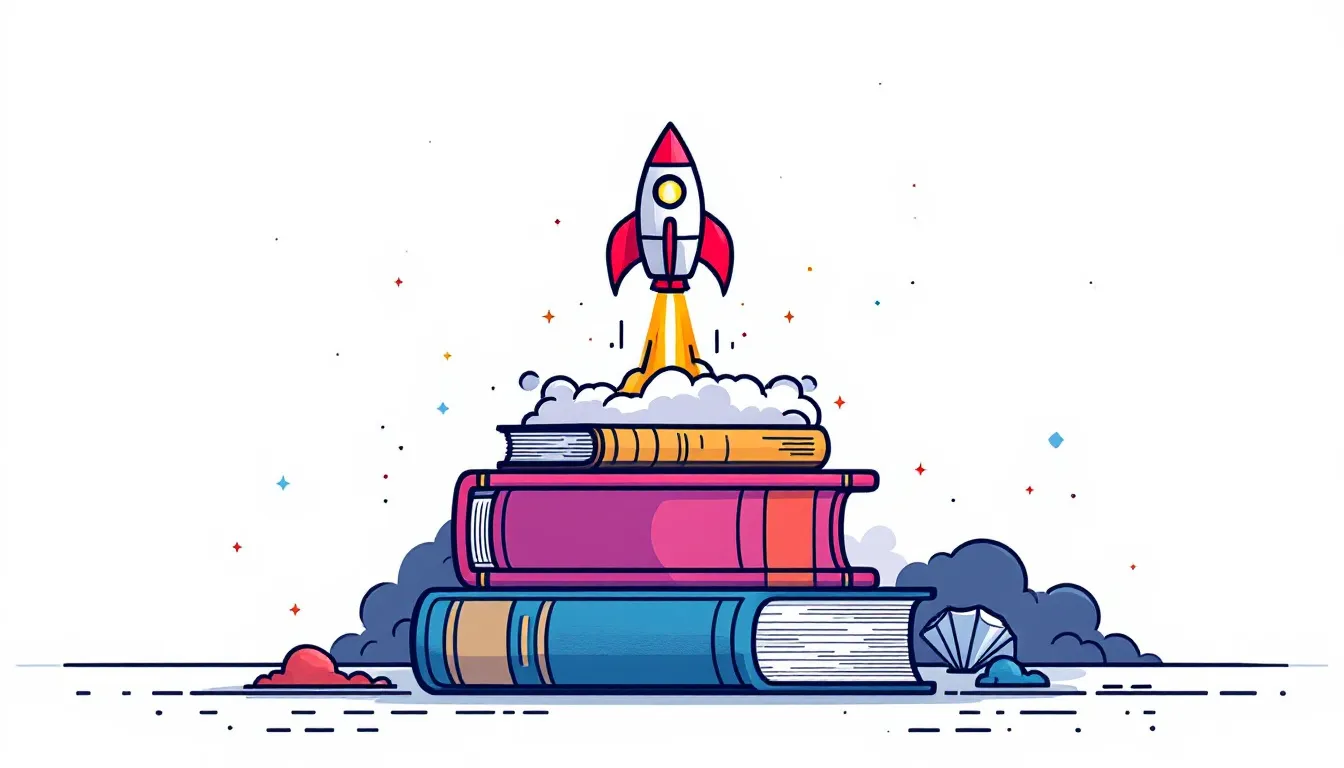
The Ultimate Affordable Book Launch Checklist: 9 Essential Steps for 2025
Complete affordable book launch checklist for 2025. Follow 9 proven steps—from budget planning to post-launch—for indie and self-published authors. Launch successfully for under $500.
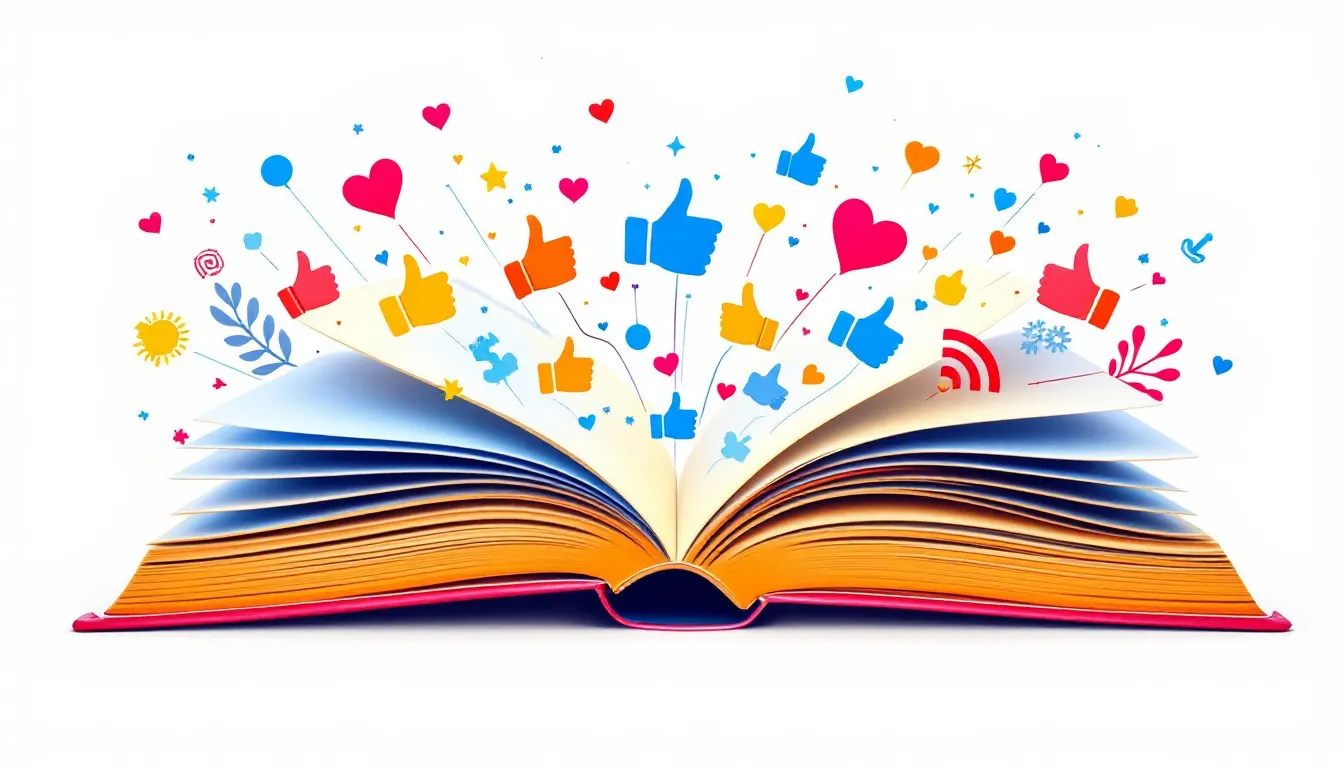
How to Write Viral Book Hooks: 10 Proven Strategies for Social Media Success
Master the art of viral book hooks with 10 proven strategies, platform-specific tactics, and templates that grab attention on BookTok, Instagram, and beyond.
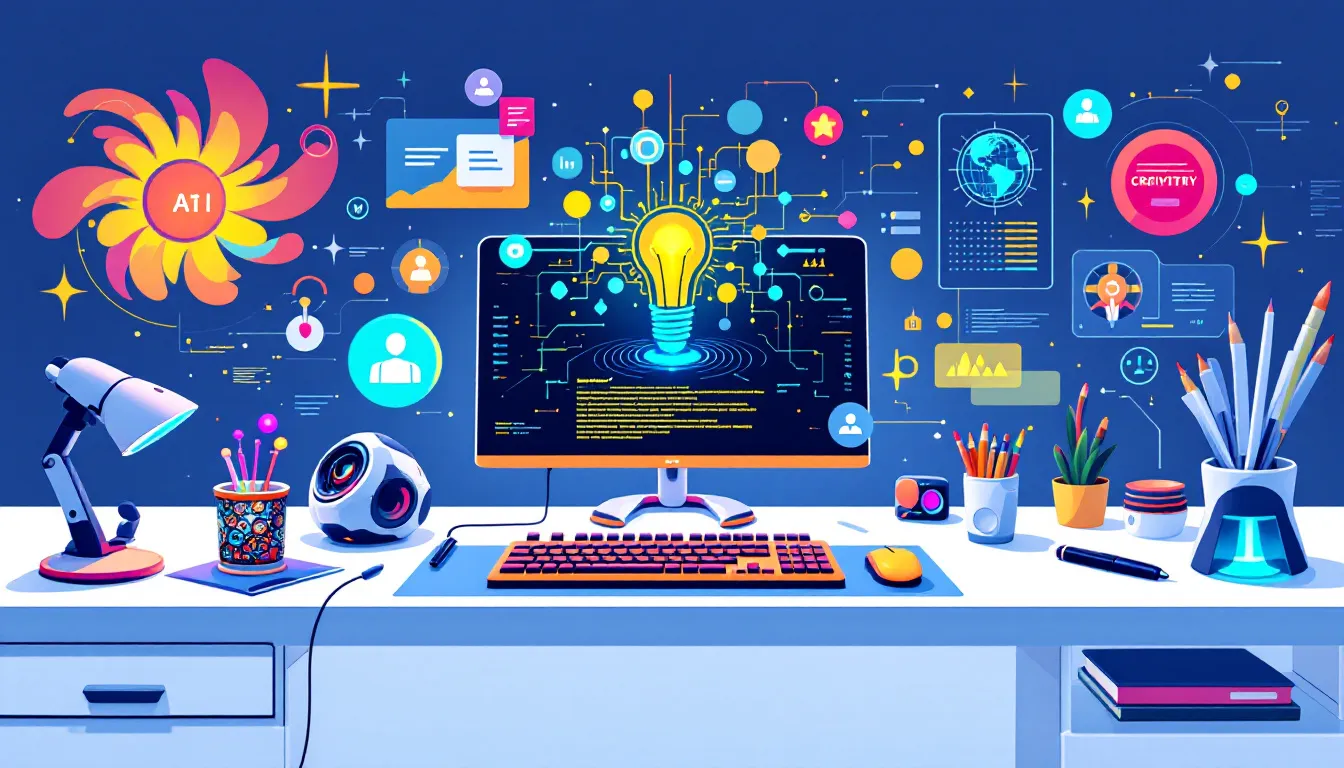
7 Must-Have AI Writing Tools for Authors
Discover essential AI writing tools for authors to boost creativity and streamline marketing. Learn actionable tips and explore solutions like ManuscriptReport.com.